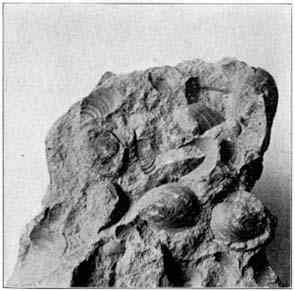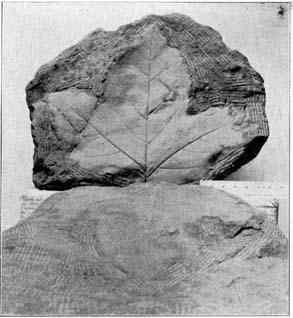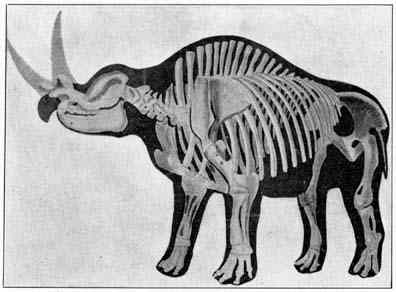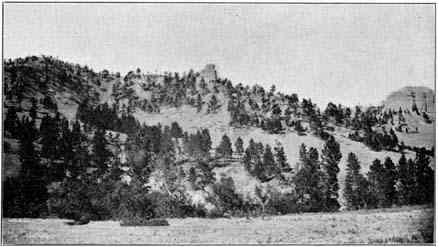largest events in their story have been puzzled
out. For centuries to come scholars will be deciphering
the details of those long ages which speak to us only
through their tombs. For the Nebraskan of today,--school
child or grown up--there is no more inspiring,
instructive lesson than a day among the limestone ledges,
noting the differences in different strata, finding the
curious forms there entombed, and trying to frame some
conception of how distant the time, and how vast the
changes since they were the living inhabitants of
Nebraska.
The carboniferous
limestone book is the oldest document in Nebraska
history. Next oldest of Nebraska documents is a curious
one in four volumes called the "Cretaceous Period." These
four volumes have striking differences of color, of
texture, of arrangement, of fossil remains, but all four
relate chapters in the story of a second great sea,
covering what is now the great plains, and stretching
from Texas to

Part of Ancient Oyster Bed

Nebraska Red Sandstone Leaf
British America. The lowest of the four volumes
is the Dakota red sandstone formation, named from Dakota
City in this state, where it was first studied. It is
from 200 to 300 feet thick and appears on the surface in
numerous places in the eastern part of the state. The
most interesting story it has to tell is the story of the
woods of long ago which grew around the borders of the
vast inland sea. The leaves of the maple, the willow, the
oak, the magnolia and of many others are as perfectly
preserved in the hard rock as though it were yesterday
instead of millions of years ago that they fell. Next
above the red sandstone lies the Benton book, named from
Fort Benton in Dakota, where it appears in its full
thickness about two hundred feet. The most prominent
feature in the history it has to relate is that of
ancient oyster beds. Little oysters and big oysters,
sheet upon sheet, and layer above lay-
|







